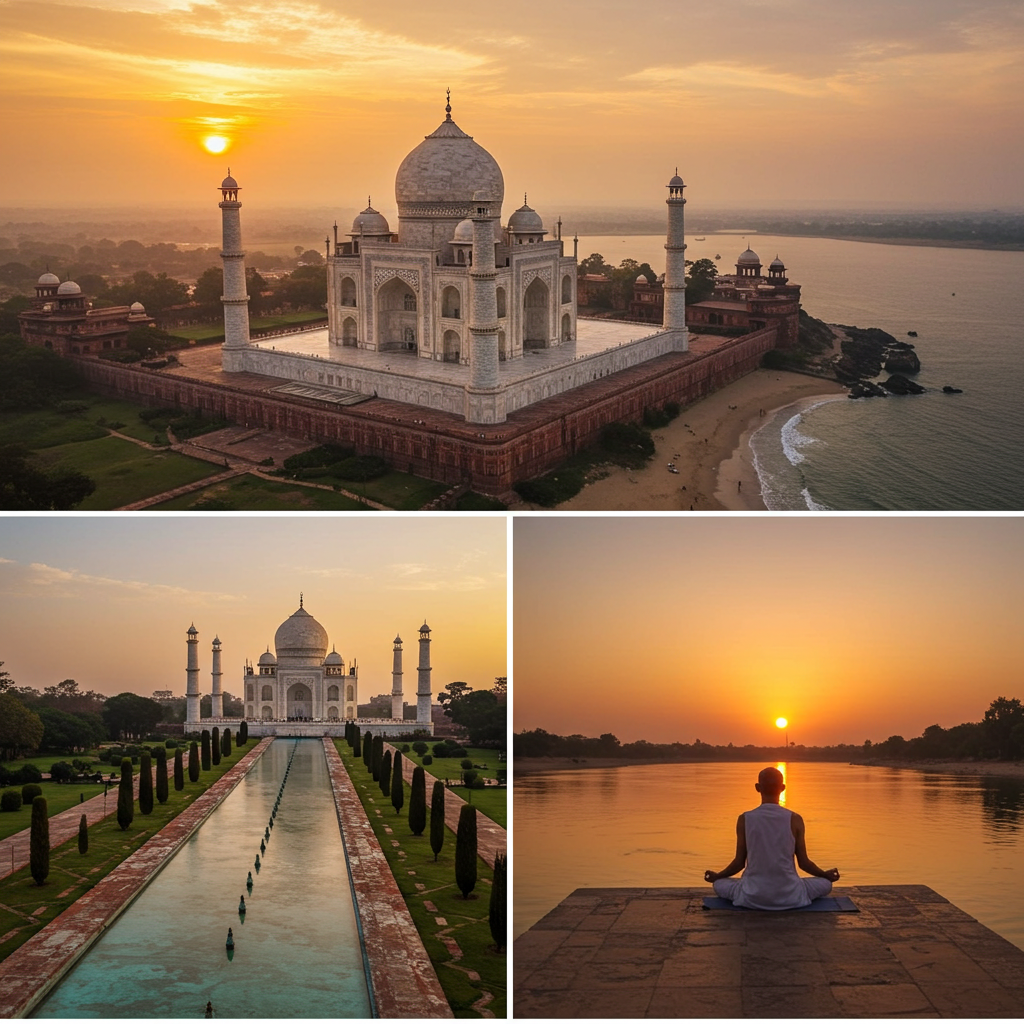An Unconventional Journey into a Hidden World
To the outside world, North Korea remains a land of mystery. Visiting it is less about sightseeing and more about stepping into a carefully orchestrated narrative. Every monument, mountain, and city block serves a purpose in telling the story of the nation.
🏛️ Pyongyang: The Official Showcase
The capital city serves as the state’s grand display. Tourists explore sites like the Juche Tower, Arch of Triumph, Kim Il-sung Square, and the ornate metro system. Pyongyang’s architecture is clean, colorful, and ideologically symbolic.
🏞️ Mount Paektu: Sacred and Scenic
Mount Paektu on the Chinese border holds mythical significance. Its crater lake, Chonji, presents a stunning natural view. It is said to be the birthplace of the nation’s founder, adding to its symbolic weight.
🏰 Kumsusan Palace of the Sun
This grand mausoleum is the resting place of Kim Il-sung and Kim Jong-il. With strict protocol and military presence, visiting the palace is both solemn and symbolic.
🏖️ Wonsan: The Seaside Escape
Wonsan is a coastal city along the Sea of Japan, offering state-run hotels, beaches, and fishing piers. It’s one of the few places open to leisure tourism within the country.
🏯 Kaesong and Its History
Kaesong, located in the south, features remnants of the Goryeo Dynasty. Palaces, tombs, and traditional wooden houses provide a glimpse into Korea’s ancient past before division.
🎪 Curated Tours
All travel is guided and state-approved. Tours include factory visits, school interactions, museums, and cultural performances—offering a glimpse of life as the regime presents it.
Conclusion
Touring North Korea is a highly structured yet thought-provoking experience. Within constraints, one engages with a nation that chooses what to show—resulting in a rare and reflective journey.
From Ancient Oases to Futuristic Skylines: Tourist Attractions of Saudi Arabia
Historically known as a spiritual hub for Muslims, Saudi Arabia is now unveiling its broader identity as a destination rich in history, nature, and innovation. From the sandstone valleys of Hijaz to visionary mega-projects like NEOM, the Kingdom is bridging a legacy of ancient civilizations with a future shaped by sustainability and smart technology.
Holy and Spiritual Cities
Mecca and Medina remain at the heart of Islamic pilgrimage. While access is restricted to Muslims, the spiritual aura and architectural grandeur of these cities are essential to Saudi identity. Massive infrastructure projects around the Grand Mosque and the Prophet’s Mosque have enhanced their capacity and tourism services.
UNESCO Heritage and Historical Sites
Saudi Arabia hosts several UNESCO World Heritage Sites, including Al-Hijr (Madain Saleh), the ancient Nabatean city carved into the sandstone. Ad-Diriyah, the birthplace of the Saudi royal family, has been meticulously restored into a cultural tourism centerpiece blending history and modern amenities.
Diverse Landscapes and Natural Beauty
Contrary to common belief, Saudi Arabia is not just desert. The misty green Asir mountains, Al-Baha’s forested hills, the coral-rich Red Sea, and the vast Empty Quarter desert (Rub' al Khali) reveal its climatic diversity. National parks like Uruq Bani Ma'arid offer protected areas for wildlife observation.
Coastal Tourism and the Red Sea
The Red Sea coast offers crystal-clear waters, exceptional coral reefs, and pristine beaches. Development projects such as The Red Sea and Amaala aim to transform this coastline into a global luxury tourism hotspot, featuring eco-resorts, underwater excursions, and yacht-based experiences.
Futuristic Projects
NEOM, a smart megacity near the Jordanian border, is a flagship of Vision 2030. "The Line", a zero-carbon city with no cars, has captured global attention. These projects promise immersive experiences that integrate technology, sustainability, and the natural environment.
Festivals and Cultural Events
Traditional festivals such as the Camel Festival, Riyadh International Book Fair, and Jeddah Season are being revitalized. These events combine music, cuisine, crafts, and folklore, enhancing Saudi Arabia’s profile in cultural tourism.
Conclusion
With its vast cultural heritage, natural beauty, and futuristic vision, Saudi Arabia is emerging as a new global travel destination. Moving beyond religious tourism, it offers a multifaceted experience—where tradition, history, environment, and innovation coexist. Understanding this evolution is vital for travelers and regional observers alike.





No comment